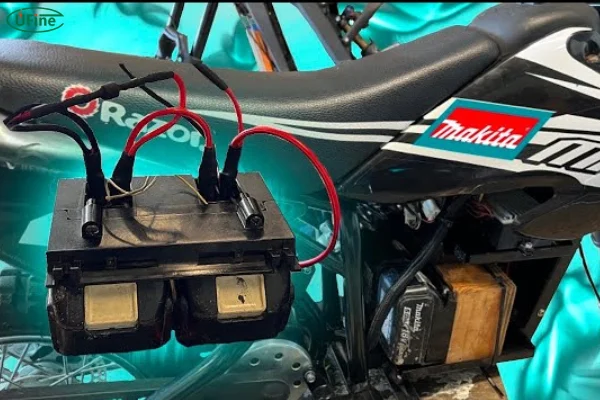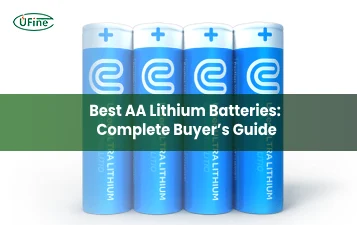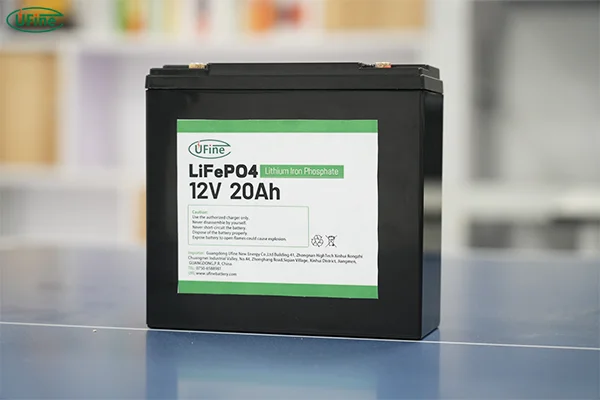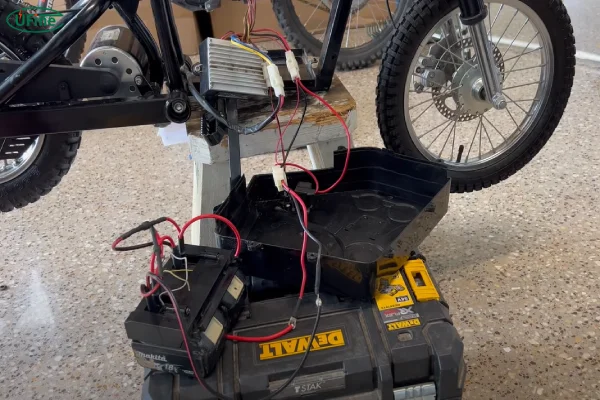If you’re a dirt bike enthusiast, you know how important it is to keep your bike in top shape. But one area that often gets overlooked is the battery. Whether you’re riding in the dirt trails or preparing for a race, having a reliable dirt bike battery is essential for smooth, uninterrupted rides. In this guide, we’ll explore everything you need to know about dirt bike batteries—from understanding their role and types to how to maintain and replace them. By the end of this article, you’ll be an expert on dirt bike batteries and ready to make an informed decision for your ride.
Part 1. Does your dirt bike need a battery?

The first question you may have is: does my dirt bike even need a battery? Well, it depends on the type of bike.
If you own a dirt bike with an electric start, a battery is essential. These bikes require a battery to power the starter motor, which is necessary for starting the engine. In fact, without a battery, you won’t be able to get your engine running.
On the other hand, some older models or competition-oriented dirt bikes don’t have electric starters. These bikes rely on a kickstarter system, which doesn’t need a battery. However, even if your dirt bike doesn’t require a battery for starting, it may still have a battery to power the lights, indicators, or other electronics, especially if you plan on riding at night or in low-light conditions.
So, in short, most modern dirt bikes have a battery, especially if they feature electric start capabilities. Even if you have a kickstart bike, the battery still plays a role in powering other electrical components.
Part 2. Dirt bike battery types
Now that we know dirt bikes usually need a battery, let’s dive into the different types. Generally, there are two main types of dirt bike batteries: lead-acid and lithium.
Lead-Acid Batteries
Lead-acid batteries are the traditional option for dirt bikes. These batteries have been around for a long time, and they’re still widely used in many dirt bikes today. Lead-acid batteries are reliable and affordable, making them a popular choice for many riders.
However, they can be heavier than their newer counterparts, and they require regular maintenance, like topping up the electrolyte levels. The typical lifespan of a lead-acid battery is around 2 to 3 years.
Lithium Batteries
Lithium batteries are becoming increasingly popular in the dirt bike world due to their numerous advantages. They are much lighter than lead-acid batteries and tend to have a longer lifespan. Lithium batteries are also more efficient, providing a consistent voltage throughout their life cycle.
One of the best things about lithium batteries is that they require very little maintenance. However, they are more expensive upfront compared to lead-acid batteries. Despite the higher initial cost, many riders prefer lithium batteries for their performance benefits in the long run.
AGM VS Lithium VS Lead-Acid Battery: Comprehensive Comparison
Part 3. Is lithium dirt bike battery the best?
So, is a lithium battery the best choice for your dirt bike? The answer depends on your priorities and riding habits.
Advantages of Lithium Batteries:
- Lightweight: One of the biggest selling points of lithium batteries is their lightweight nature. This makes them ideal for competitive riders who need to keep the bike as light as possible for better performance.
- Longer Lifespan: Lithium batteries last longer than lead-acid batteries. They can easily last 5 to 7 years if properly maintained, compared to the 2 to 3 years you can expect from a lead-acid battery.
- Faster Charging: Lithium batteries charge faster, which can be a huge benefit if you’re on the go and need a quick recharge between rides.
- Maintenance-Free: Lithium batteries don’t require much attention. You won’t need to top up the electrolyte levels, which is a plus for riders looking for convenience.
Disadvantages:
- Higher Initial Cost: Lithium batteries are generally more expensive than lead-acid batteries, so they may not be the best choice for riders on a tight budget.
- Sensitive to Extreme Temperatures: While they are more durable overall, lithium batteries don’t perform well in extremely hot or cold temperatures.
If you’re looking for a lightweight, low-maintenance, long-lasting option, a lithium battery might be the best for you. However, if you’re more concerned with budget, a lead-acid battery could be a more suitable choice.
Part 4. Typical voltage
The typical voltage of a dirt bike battery depends on the bike’s electrical system. Most modern dirt bikes operate on a 12V system. This means the battery provides 12 volts of power to start the engine and run the electrical components like lights and indicators.
Some dirt bikes, especially older models, might have a 6V system, but these are less common today. Most high-performance and modern bikes use 12V batteries for better power and efficiency.
Part 5. Typical capacity
When considering a dirt bike battery, another important factor to look at is its capacity. The capacity of a battery is typically measured in ampere-hours (Ah). For dirt bikes, the capacity usually ranges from 3 Ah to 10 Ah, depending on the type of bike and its electrical requirements.
- Smaller capacity (around 3 to 5 Ah): Suitable for smaller dirt bikes or bikes with fewer electrical components. These batteries are lighter but may not last as long in terms of power output.
- Larger capacity (around 7 to 10 Ah): Found in more powerful bikes with more electrical systems. These batteries provide longer-lasting power, especially for electric start systems and lights.
Part 6. Charging and charger
Proper charging and maintenance are essential for prolonging the life of your dirt bike battery. Here are some key tips for keeping your battery in top condition:
- Use the correct charger: Always use a charger that is specifically designed for your dirt bike battery. For lithium batteries, make sure you use a lithium-specific charger to prevent overcharging or damaging the battery.
- Avoid overcharging: Overcharging can significantly reduce the lifespan of your battery, so never leave the battery plugged in for too long.
- Charge regularly: If you don’t use your bike for extended periods, make sure to charge your battery every few weeks to prevent it from becoming deeply discharged.
Types of Chargers:
- Standard chargers: These are the most common types of chargers, and they work with both lead-acid and lithium batteries.
- Smart chargers: These chargers have built-in microprocessors that detect the battery’s status and adjust the charging rate accordingly, preventing overcharging.
- Trickle chargers: Trickle chargers are great for keeping your battery topped off if you’re storing the bike for an extended period.
Part 7. Care and maintenance tips
Here are some tips to ensure your dirt bike battery lasts longer:
- Keep it clean: Dirt and debris can accumulate on the battery terminals, which can cause poor contact and lead to performance issues. Clean the terminals with a wire brush regularly.
- Check the voltage: Keep an eye on your battery’s voltage. If it’s consistently lower than the recommended level, it might be time to replace it.
- Store properly: If you’re storing your bike for a long time, remove the battery and store it in a cool, dry place.
Part 8. How to replace the dirt bike battery?
Replacing a dirt bike battery isn’t as complicated as it may seem. Here’s a step-by-step guide:
- Turn off the bike: Make sure the bike is completely off before starting the process.
- Locate the battery: Most dirt bike batteries are located under the seat or in the side compartment.
- Remove the old battery: Disconnect the negative terminal first, followed by the positive terminal. Then, remove any securing bolts or straps holding the battery in place.
- Install the new battery: Place the new battery in the compartment, securing it with straps. Connect the positive terminal first, followed by the negative terminal.
- Test the bike: Turn the bike on and ensure the battery is providing power to all systems.
Part 9. Choosing the best dirt bike battery: key considerations
When selecting a new battery for your dirt bike, there are a few key factors to consider:
- Battery type (Lead-acid or Lithium)
- Voltage (12V or 6V)
- Capacity (3 Ah to 10 Ah)
- Brand reputation (Look for trusted brands
- Weight (Lithium batteries are lighter, but more expensive)
- Maintenance requirements (Lithium is maintenance-free, while lead-acid needs more attention)
- Temperature tolerance (Make sure the battery can handle your local weather conditions)
Part 10. Conclusion
Choosing the right dirt bike battery is crucial for ensuring your bike runs smoothly and reliably. Whether you choose a lead-acid or lithium battery, understanding the types, voltage, capacity, and maintenance tips will help you get the most out of your battery. With the right care and proper maintenance, your dirt bike battery will last longer, allowing you to enjoy many thrilling rides ahead.
Related Tags:
More Articles

A Buyer’s Guide for AA Size Lithium Battery
Discover the power of AA size lithium batteries—types, voltage, capacity, and more! Learn how to choose the best one for your needs. Read now!
Li-Ion Battery Prices – Where to Buy Cheap & Safe
Discover li-ion cell prices, key market factors, and how to find affordable custom batteries from top suppliers like Ufine Battery.
How Long Does a 2200mAh Battery Last?
Discover everything about 2200mAh batteries—types, charging time, lifespan, and whether it’s enough for your device.
Understanding Great Power Battery Technology: The Benefits of Lithium Solutions
Great power batteries deliver high performance for EVs, solar, and more. Learn why lithium is the top choice for power, lifespan, and efficiency.
How to Choose the Right Kayak Battery?
Need power for your fish finder or motor? This guide makes choosing the right kayak battery easy with tips on types, specs, and performance.






